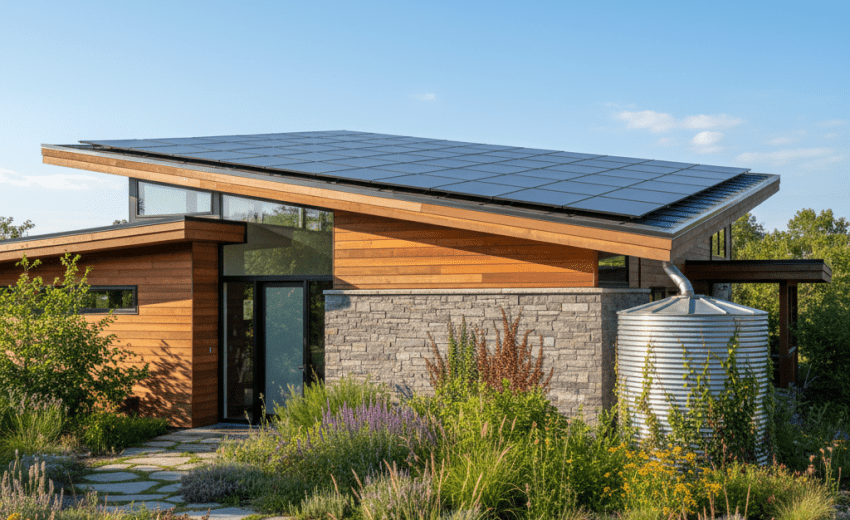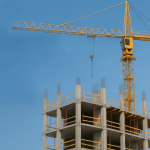
Eco-Friendly homes are no longer a passing trend — they’ve become a conscious choice for homeowners who want to live sustainably while saving money and improving their quality of life. Renovating with an Eco-Friendly approach means more than just swapping light bulbs or adding plants; it’s about integrating smart materials, technologies, and designs that reduce environmental impact and create a healthier home. Let’s explore how you can turn your next renovation project into a greener, smarter, and more efficient transformation.
1. The Power of Energy Efficiency
Energy consumption is one of the biggest contributors to environmental impact, and making Eco-Friendly upgrades can drastically reduce your home’s energy footprint.
- Insulation and Windows: Start by upgrading insulation in walls, attics, and floors. Eco-Friendly insulation made from recycled materials or natural fibers keeps indoor temperatures stable, reducing the need for heating or cooling.
- Energy-Efficient Appliances: Invest in appliances with ENERGY STAR ratings. They use less electricity and water while maintaining high performance.
- Smart Thermostats: These devices optimize temperature settings based on your schedule, cutting down unnecessary energy use and saving up to 20% on energy bills.
2. Sustainable Materials for Every Corner
Choosing Eco-Friendly materials ensures your renovation supports sustainability from the ground up.
- Recycled or Reclaimed Materials: Use reclaimed wood, recycled glass tiles, and bamboo flooring. These not only reduce waste but also add a unique character to your home.
- Low-VOC Paints: Traditional paints release harmful volatile organic compounds (VOCs). Eco-Friendly paints improve indoor air quality and create a safer environment for your family.
- Eco Concrete Alternatives: Products like fly ash concrete or hempcrete offer durability with a much lower carbon footprint compared to traditional concrete.
3. Water Conservation Matters
Eco-Friendly renovation isn’t complete without addressing water efficiency.
- Low-Flow Fixtures: Replace traditional faucets, showerheads, and toilets with low-flow models to significantly reduce water consumption without compromising comfort.
- Greywater Recycling Systems: These systems reuse water from sinks and showers for garden irrigation or flushing, minimizing water wastage.
- Rainwater Harvesting: Capture and store rainwater to use for outdoor needs, helping you conserve municipal water and lower utility bills.
4. Solar Power and Renewable Energy Integration
One of the most impactful Eco-Friendly upgrades is switching to renewable energy sources.
- Solar Panels: Installing solar panels not only decreases reliance on grid electricity but can also generate surplus power that you can sell back to the grid.
- Solar Water Heaters: These systems use sunlight to heat your water, reducing energy bills and carbon emissions.
- Wind and Geothermal Options: If feasible, small wind turbines or geothermal systems can further enhance your home’s energy independence.
5. Smart Home Technology for Sustainable Living
Eco-Friendly living aligns perfectly with smart home innovations.
- Automated Lighting: Smart lighting systems adjust brightness based on daylight, reducing wasteful energy use.
- Smart Irrigation Systems: These systems use weather data to water your garden only when necessary, preventing overwatering.
- Home Energy Monitoring: Track your energy usage in real time, identifying opportunities to save more power and money.
6. Green Landscaping and Outdoor Spaces
The exterior of your home plays a major role in an Eco-Friendly lifestyle.
- Native Plants and Drought-Resistant Gardens: Native species require less water and maintenance, making them ideal for sustainable landscapes.
- Composting Areas: Turning organic waste into compost enriches your soil and reduces landfill waste.
- Permeable Paving: This allows rainwater to soak into the ground rather than running off into drains, supporting better groundwater balance.
7. Long-Term Benefits of Going Green
Eco-Friendly renovation not only benefits the planet but also offers lasting rewards for homeowners.
- Lower Utility Bills: Energy-efficient systems reduce monthly costs.
- Healthier Living Spaces: Cleaner air, natural materials, and better lighting improve well-being.
- Increased Property Value: Sustainable homes appeal to modern buyers and often command higher resale prices.
Conclusion
Eco-Friendly upgrades create homes that are not just beautiful but also built for the future. Whether it’s installing solar panels, using recycled materials, or incorporating smart systems, every choice makes a difference. A sustainable renovation is an investment in your comfort, your wallet, and the planet.
Ready to Build with Confidence?
Get in touch with Charminar to learn how our project management expertise can streamline your next development.
📧 contact@bluediamondfm.com
📞 +971 56 705 4223
🌐 https://charminardubai.com/
Frequently Asked Questions (FAQ)
What are the most cost-effective Eco-Friendly upgrades?
Insulation, LED lighting, and low-flow water fixtures are some of the most affordable Eco-Friendly changes that still deliver big energy savings.
Can older homes be renovated to be Eco-Friendly?
Absolutely. Even older homes can benefit from energy-efficient windows, improved insulation, and solar power installations without losing their charm.
Are Eco-Friendly materials durable?
Yes, many sustainable materials like bamboo, recycled metal, and reclaimed wood are not only durable but also stylish and long-lasting.
How do Eco-Friendly renovations affect resale value?
Homes with green certifications or sustainable features often attract eco-conscious buyers, increasing property value and marketability.
Do Eco-Friendly renovations require special contractors?
It’s best to hire contractors familiar with sustainable construction methods and materials to ensure your renovation meets green building standards.







